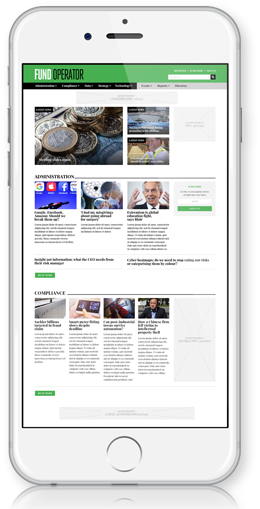 @Pixabay
@Pixabay
This topic will be covered at Insurance Investor Live | Benelux 2025 on November 13 in Amsterdam. Find out more and how to register, here.
Investment teams at insurance companies are under stress to remain competitive within the marketplace, and being operationally efficient is crucial to this. Many believe Artificial Intelligence (AI) is the best way to achieve this.
So, what does it entail, and is it accurate?
Is AI reducing operational costs?
Yes, AI can make investment operations processes more efficient, streamlined, and help with the overall workflow. However, there are also many cons and some complicated issues to overcome to make this a reality.
Insurance companies should look to monitor the risks and rewards of implementing AI in managing their cost of operations and ensure that overall performance is not sacrificed. To do this, it is also important for companies to ensure high performance standards are maintained, resulting in efficient and consistent output levels.
“The majority of businesses are switching to AI in some shape or form within the industry.”
One of the main challenges facing companies is waste in human and material resources. Outdated processes and human error can result in losses and decreased operational efficiency.
Software company Splunk, in collaboration with Oxford Economics, said in a report that “on average, companies lose $49 million in revenue each year due to downtime inefficiencies, which are time-consuming and result in reduced productivity overall, negatively impacting the efficiency of a company.”
In the report, Jason Lee, Chief Information Security Officer, Splunk, said, "When you think of downtime, 56% being security-focused isn't surprising. What's surprising is that human error remains the top cause. Automating more processes can help reduce these errors and improve overall security posture."
This demonstrates the industry's growing fascination with finding ways to implement new technologies into its processes.
“The majority of businesses are switching to AI in some shape or form within the industry,” Ashish Doshi, Senior Business Consultant, Insurance Solutions, Ortec Finance, said, highlighting how AI is still growing in popularity.
This does come with downsides, though. The costs of implementing technologies can be high initially for companies, which is a factor to consider when deciding where to invest in AI, as Jacob Dencik, Research Director, Institute for Business Value, said in a report. “Even if something is technically feasible to do with AI, if the business case doesn’t stack up because of the cost of computing or the cost of training these models, then we’re not going to see the impact of AI on business activity that many people anticipate.”
The balance of optimising automated processes against risk is something that Phil Schmoyer, a Principal with Baker Tilly’s digital solutions practice, said needs to be in line with the business's goals. “These decisions should be carefully weighed for each organisation and balanced with your risk tolerance and innovative culture," he said.
However, lowering operational costs isn’t always good for avoiding risks, according to Mark Gillan, Head of Investment Operations, Scottish Widows.
“The more you spend, the more benefit you get long term,” he said. Installing AI can provide benefits to companies in output and processing terms. It can also help in mitigating the risks of error or costs of 'redo' in old technology services, so, for operating costs, it has its benefits.
Gillan said lowering costs isn’t always the driving factor surrounding investments into new technology.
“By building them in from the outset, this is navigating potential risks of installing new into old,” he said. If companies are proactive in structuring AI into their models from the outset rather than trying to merge old with new, compatibility and data-processing risks can be avoided.
This streamlines operations and enables companies to reduce their costs of operating by extracting the best skillsets of AI, such as rapid data processing and analysis at a faster rate than humans.
How humans and AI work together
To benefit investment teams at insurance companies, the collaboration between AI and human employees is crucial to achieve more efficient output. Both have skillsets that are useful to the other, and combining these is paramount.
"For the two to work alongside each other effectively, employees must understand AI systems."
“If you ask (AI) why have you come up with this result, they tend to struggle, and decision making becomes difficult," said Hens Steehouwer, Chief Innovation Officer, Ortec Finance. "For insurers and asset managers, who have to understand and explain their decisions, that doesn’t work well. A combination of AI, carefully injected into existing models and processes, can do a better job here."
Human skillsets of creativity, emotional intelligence, and critical thinking are traits that technology cannot replicate. “For critical decision making, we’ve still got humans in there, and again, we build this in secure by design,” said Mark Gillan, as the value of human employees is clear.
For the two to work alongside each other effectively, employees must understand AI systems.
“The user needs to be able to understand the output and be able to explain the results to various stakeholders,” Doshi said. “We use AI to enhance solutions we provide to our clients rather than to replace current processes. We treat the application of AI in our solutions as evolution, not a revolution.”
Industry reports showed that one in three insurers has had a formal AI training programme in place. This highlights the need to bridge the gap between employees and AI systems to extract the highest level of efficiency.
“It’s important to put policies, frameworks, and processes in place and communicate regularly around that with the colleagues who are working with these tools,” said Steehouwer, explaining how to streamline processes in transitioning to AI tools.
“Reducing costs without building a scalable solution will merely result in fewer resources being asked to do more, reducing morale, bogging down the process, cutting compliance and possibly regulatory corners, and negatively impacting the customers,” Schmoyer said. This means it is crucial to teach proper uses of AI in its contribution within a work environment to the workforce.
If companies are aware of AI’s potential risks to investment operations, “which if not balanced, could expose the organisation to a variety of negative implications, including regulatory, customer experience, reputational, and financial risk exposure,” Schmoyer said, then they can implement risk factors into their models from the outset and have a smoother transition between tasks, resulting in increased efficiencies.
Companies are “aware that AI can make mistakes. AI models can start to hallucinate and come up with very convincing stories about things that are completely wrong. You will always need to have balance and conduct human checks,” Steehouwer said. These checks can help avoid errors and increase operational efficiencies.
Setting high performance standards
To achieve all these factors, the solution is holistic. Which means, alongside the utilisation of AI, it is important for companies to implement high-performance standards within the workplace to increase efficiency and output. According to the Investment Association (IA), “culture, talent, and inclusion have a real impact on a company’s long-term reputation and sustainability”.
"Systems such as KPIs and regular feedback sessions can improve operational efficiencies for companies as output is monitored."
“Employees need to understand what’s expected of them, and must be managed so that they are motivated, have the skills, resources and support they need to succeed, and are accountable for their work,” the Chartered Institute of Personnel and Development (CIPD) said in a report.
This will be no different when AI becomes more embedded in the workplace and interacts with existing strategies for achieving high performance standards.
By stressing clear, measurable, and attainable standards, a company ensures that every member understands what is expected, thereby fostering a culture of accountability and focus, venture capitalist Faster Capital said in a report on the matter.
To resolve these issues, companies can implement performance management systems. These systems set goals for employees, whilst setting clear performance targets and giving individual feedback. Research shows a happiness and productivity link between employees and how this affects the company’s overall performance, according to industry experts.
Systems such as KPIs and regular feedback sessions can improve operational efficiencies for companies as output is monitored, which has long been a practice in the industry.
“From a social perspective, feedback, meetings, and seeking out viewpoints are important,” said Mark Wright, Chief Operating Officer at investment firm Kimura Capital, in a 2022 interview with Fund Operator on the importance of culture in the office
Through experience and data, as the CIPD reported, “76% of employees with no performance management agreed that ‘I achieve the objectives of the job, fulfil all requirements, whereas this figure was 89% for those with systematic performance management'.” This shows that fulfilling requirements is crucial for employees to increase efficiency, and should performance management aid in boosting this, it would be beneficial to overall efficiencies, but not a lightning rod.
There are risks surrounding this, as workplace burnout can become an issue. “There are many potential causes of burnout in today’s workplaces, such as excessive workloads, low levels of support, having little say or control over workplace matters, lack of recognition or rewards for one’s efforts, and interpersonally toxic and unfair work environments,” said the Journal of Occupational Health Psychology.
Workplace burnout can lead to “57% increased risk of workplace absence greater than two weeks due to illness”, said a report by the American Psychological Association, with a 180% increased risk of developing depressive disorders. Companies must model their management in an effective and manageable way in order not to lose or harm staff.
AI or not, a reduced workforce not only reduces the efficiency of a company but can harm its reputation.
How will this work going forward?
By combining the utilisation of AI and the increase of performance standards, investment teams at insurance companies have the effective tools to increase their operational efficiencies. Reducing repetitive manual tasks with AI technology and combining this with a boost in employee morale to complete high-rewarding tasks contribute to this increase, as they aim for a balance between technology and humans.
“We believe that AI should be used to enhance decision-making, not make decisions for us,” said Doshi. The need for continuous cooperation between human and machine is critical for companies.
To evolve, the application of AI can benefit companies in increasing operational output, yet it is crucial that the risks are also considered.
Over the next five to ten years, Schmoyer said that he sees technology as the single most important tool in efficiency and cost optimisation for investment operations, with AI being at the forefront.
In a market where speed and cost-efficient resources are the goal, strategies must be implemented to extract the best parts of human and AI capabilities. The crucial balance between the two is what will ultimately optimise and further operational efficiencies for Investment teams at Insurance companies.
This topic will be covered at Insurance Investor Live | Benelux 2025 on November 13 in Amsterdam. Find out more and how to register, here.
Please Sign In or Register to leave a Comment.
SUBSCRIBE
Get the recent popular stories straight into your inbox







